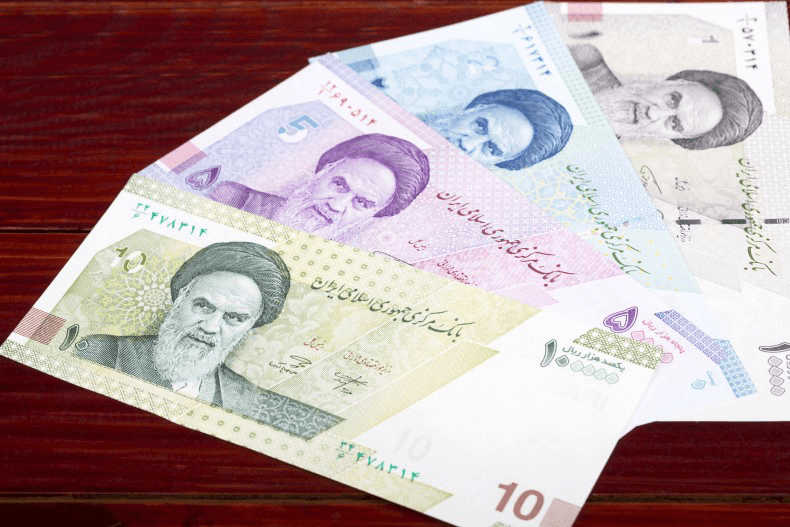Iran is still one of the most heavily sanctioned countries in the world, and it is not possible to link this to a single reason. There are several reasons we have to mention, such as the concerns surrounding its nuclear program, regional military activities, human rights record, and alleged connections to terrorism. For these reasons, several nations and multinational organizations that range from the E.U. to the U.S.A. imposed a complex web of restrictions on Iran over the years.
A Brief Timeline of Iran Sanctions
As you may guess, all of these sanctions didn’t just happen overnight. So, we considered it relevant to provide a brief explanation of the development of sanctions on Iran through the historical events.
- 1979: In this year, the United States imposed its first sanctions on Iran, which encompassed a freeze on Iranian assets and restrictions on trade, just after the seizure of the U.S. Embassy in Tehran during the hostage crisis, where 52 American diplomats and citizens were held hostage for 444 days. We can consider this year as the beginning of decades-long tensions between the two nations.
- 2006–2010: Iran raised concerns about the possibility of developing nuclear weapons because it had a uranium enrichment program, and for this reason, the United Nations Security Council (UNSC) adopted a series of nuclear-related sanctions against Iran.
- 2015: Another significant milestone that we have to mention is the time when Iran signed the Joint Comprehensive Plan of Action (more commonly referred to as the Iran nuclear deal) with the P5+1 nations (the U.S., U.K., France, China, Russia, and Germany).
- 2018: Three years later, the Trump administration decided to unilaterally withdraw from the JCPOA, but it should also be noted that this led to concerns about whether the deal failed to address Iran’s ballistic missile program and regional activities.
- 2020–2023: Inevitably, the escalation of tensions, mainly due to the human rights violations and Iran’s development and export of drones, led to the new rounds of sanctions by the European Union and the United Kingdom against Iran.
- 2024–2025: Sanctions were further tightened by Western nations to focus on curbing Iran’s arms exports and suspected cyber operations that target critical infrastructure globally. Both these measures and ongoing sanctions aimed to curb Iran’s influence in the region and limit its military capabilities, in addition to diplomatic efforts.
- 2025-2026: With the United States' airstrike on Iran and President Trump's efforts to cease the conflict, the conflict between Iran and Israel escalated in 2025. Even though there were brief ceases, there is still high tension, harsher sanctions, and continuing instability are expected in 2026.

Key Sanctions Regimes Targeting Iran
1. United States (OFAC Sanctions)
There are primary and secondary sanctions that the U.S. Treasury Department enforces on Iran, both of which aim to restrict the country’s access to global markets and curb activities perceived as threats to international security. Primary Sanctions block almost all direct trade, banking, and technology transfers between U.S. entities and Iran, which means without explicit authorization, U.S. companies and individuals are prohibited from doing business with Iranian individuals, businesses, or government entities. In order to discourage non-U.S. companies from dealing with Iran by threatening to restrict their access to the U.S. financial system or markets, Secondary Sanctions penalize foreign entities that engage with critical Iranian sectors, such as energy, shipping, and banking. Then there is a list named the Specially Designated Nationals (SDN) List, which identifies hundreds of individuals and entities connected to the Islamic Revolutionary Guard Corps (IRGC), financial fraud, terrorism, or nuclear procurement efforts.
2. European Union Sanctions
The European Union has imposed several layers of sanctions on Iran that target activities related to nuclear proliferation, human rights abuses, and military capabilities such as the Arms Embargo and Export Controls, which prohibits the export of arms and dual-use goods to Iran and Post-2020 Human Rights Sanctions, which was put in measure after the concerns about Iran’s suppression of protests and human rights abuses.
3. United Nations
The UN Security Council Resolution (UNSCR) 2231 plays a very important role on the sanctions on Iran because of the lifting of core nuclear-related restrictions in 2015 as part of the JCPOA (Joint Comprehensive Plan of Action) but still, several critical restrictions remain in place, which can be exemplified by the Ballistic Missile and Arms Restrictions.
4. United Kingdom (OFSI Sanctions)
Following Brexit, the UK has developed its own independent sanctions regime through the Sanctions and Anti-Money Laundering Act 2018 (SAMLA), which encompasses uranium enrichment activities, military technology exports, and financial networks (this imposes asset freezes and limitations on access to international financial systems if they are linked to Tehran’s regime.)
5. Canada
Canada enforces its sanctions on Iran under the Special Economic Measures Act (SEMA), which covers asset freezes and trading bans, as well as sanctions that focus on human rights (response to Iran’s domestic protests and its treatment of women and minority groups).
.png)
Sectors Under Scrutiny
Iran’s economy and key sectors face some of the strictest restrictions globally:
| Sector | Restrictions |
| Banking & Finance | Access to SWIFT is blocked, with asset freezes on the Central Bank of Iran and other institutions. |
| Oil & Petrochemicals | Sanctions banned imports, exports, and investments in Iranian oil, natural gas, and refining industries. |
| Technology | Encryption technologies, drones, telecommunications equipment, and cyber tools are banned. |
| Maritime | Iranian vessels are blacklisted and ship-to-ship transfers are monitored. |
| Aviation | Aircraft parts, maintenance, and services for Iranian airlines are restricted. |
Sanctions Designations: Who Is Targeted?
Iran's key organizations, entities, and individuals such as, Islamic Revolutionary Guard Corps (IRGC), Iranian Ministry of Intelligence and Security (MOIS), its key financial institutions, Iranian shipping lines, entities involved in military development and individuals linked to political repression, human rights abuses and cyber operations, remain as the primary targets of sanctions.
Compliance Obligations for Businesses
Rigorous compliance measures must be adhered at all costs by businesses that operate in complex global markets, like Screening Clients and Transactions against global sanctions lists; Enhanced Due Diligence for high-risk sectors and jurisdictions linked to Iran; avoiding indirect dealings; and maintaining real-time monitoring/implementing advanced reporting systems.
Common Red Flags in Iran-Linked Transactions
We can list many transaction patterns that indicate sanctions-busting efforts such as routing transactions through offshore shell companies in UAE, Turkey or Malaysia, using front companies to obscure Iranian connections, structuring payments to remain below reporting thresholds, employing transliteration variations to evade sanction screening, and disabling Automatic Identification System (AIS) trackers on Iranian-affilated Maritime vessels.
Impacts of Sanctions Against Iran: Economic, Social, and Political Effects
Economic Impacts of Sanctions on Iran
These sanctions resulted in Iranian rial losing more than 80% of its value since 2018, oil export dropping from around 2.5 million barrels per day to under 1 million bpd, a high inflation that annually exceeds 40%, unemployment of youth which is estimated at over 30%, removal of Iran from the SWIFT banking system and lastly, the significant decrease of foreign direct investment.
Social Impacts of Sanctions on Iran
As expected, the effects are not solely limited to economic impacts. The sanctions that we’ve covered caused poverty and inequality due to rising inflation and currency collapse, medical shortages in critical medicines like chemotherapy drugs and insulin, brain drain in healthcare, growth in the black market, and obviously, public unrest that fueled large-scale protests.
Political Impacts of Sanctions on Iran
And lastly, we shouldn’t overlook the political impacts of these sanctions on Iran such as hardliner empowerment with the rise of anti-western political factions, reduced diplomatic engagement because of the tensions with the U.S. and EU, formation of closer ties with Russia and China, breakdown of JCPOA due to the U.S. withdrawing from the nuclear deal in 2018 and Iran’s continuous support for regional militias in other countries which caused further regional instability.
How Sanction Scanner Supports Compliance
Now, reading all of these could make it feel daunting to navigate the complex layers of Iran-related sanctions. Nevertheless, tools like Sanction Scanner can simplify the compliance for your businesses by offering real-time watchlist screening across OFAC, EU, UN, OFSI and other global lists; advanced name-matching algorithms to reduce false positives caused by transliteration variations or minor spelling differences; enhanced monitoring if transactions linked to sensitive sectors or high-risk jurisdictions; and automated alerts/audit logs to streamline internal compliance reviews and suspicious activity reporting.
FAQ's Blog Post
The U.S., EU, UK, Canada, Australia, and Japan currently enforce sanctions on Iran. Some are unilateral (e.g., U.S. secondary sanctions), while others follow UN Security Council mandates.
Sanctions include asset freezes, oil and petrochemical embargoes, export bans on dual-use goods, travel bans, and financial restrictions. The U.S. also enforces secondary sanctions targeting non-U.S. entities.
Yes. As of 2025, Iran remains on the FATF blacklist due to strategic AML/CFT deficiencies and lack of full cooperation.
Many major Iranian banks, including the Central Bank of Iran, are designated under U.S. and EU sanctions. Restrictions limit their access to SWIFT and international finance.
Only in limited sectors and jurisdictions. U.S. companies generally cannot, while EU businesses may engage under strict humanitarian or exempted categories.
Secondary sanctions target non-U.S. persons doing business with sanctioned Iranian sectors (like oil or banking). Violators risk losing access to U.S. markets or financial systems.
Generally no. U.S. and EU sanctions prohibit the sale, transport, or insurance of Iranian crude and petrochemical products.


